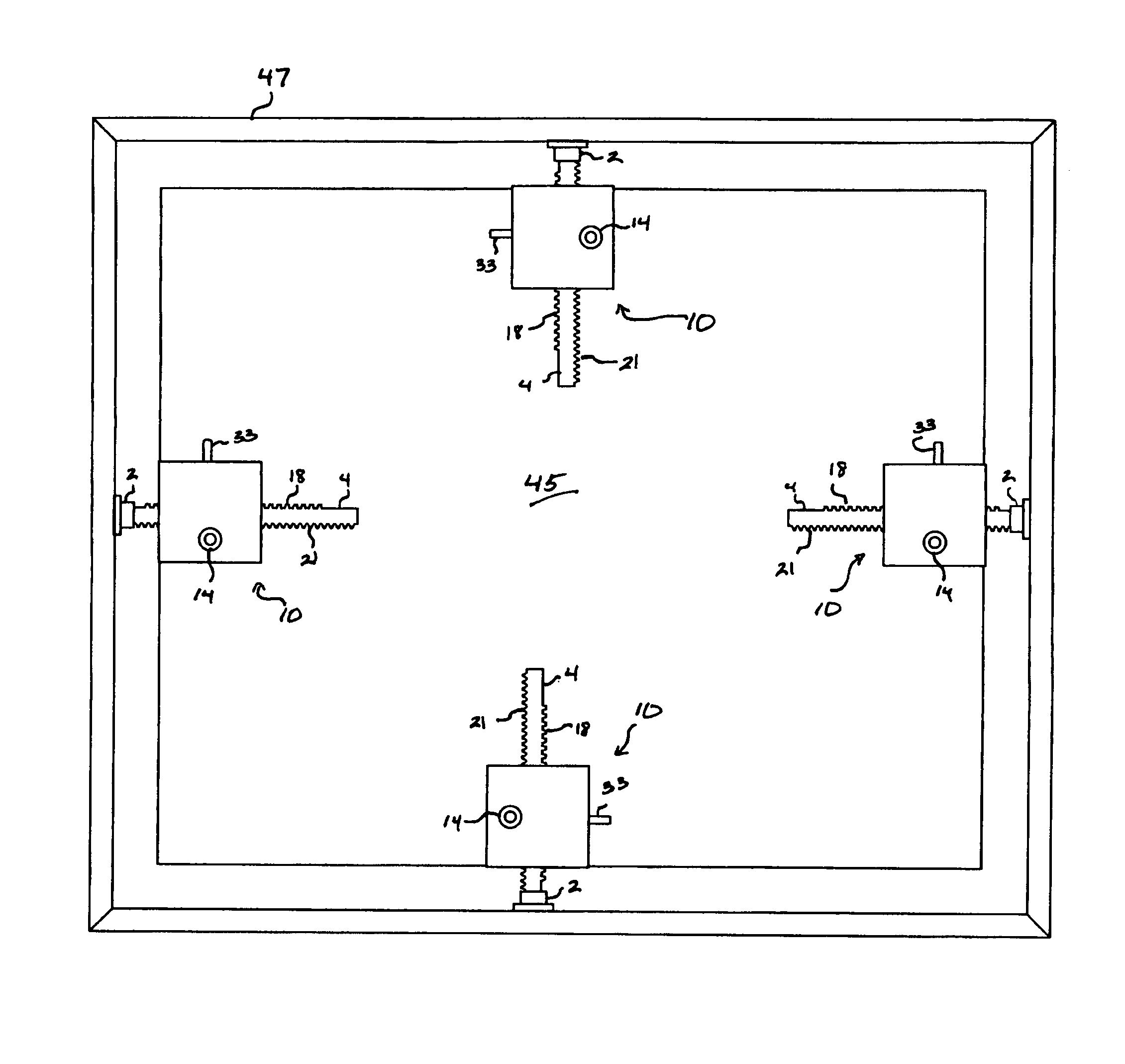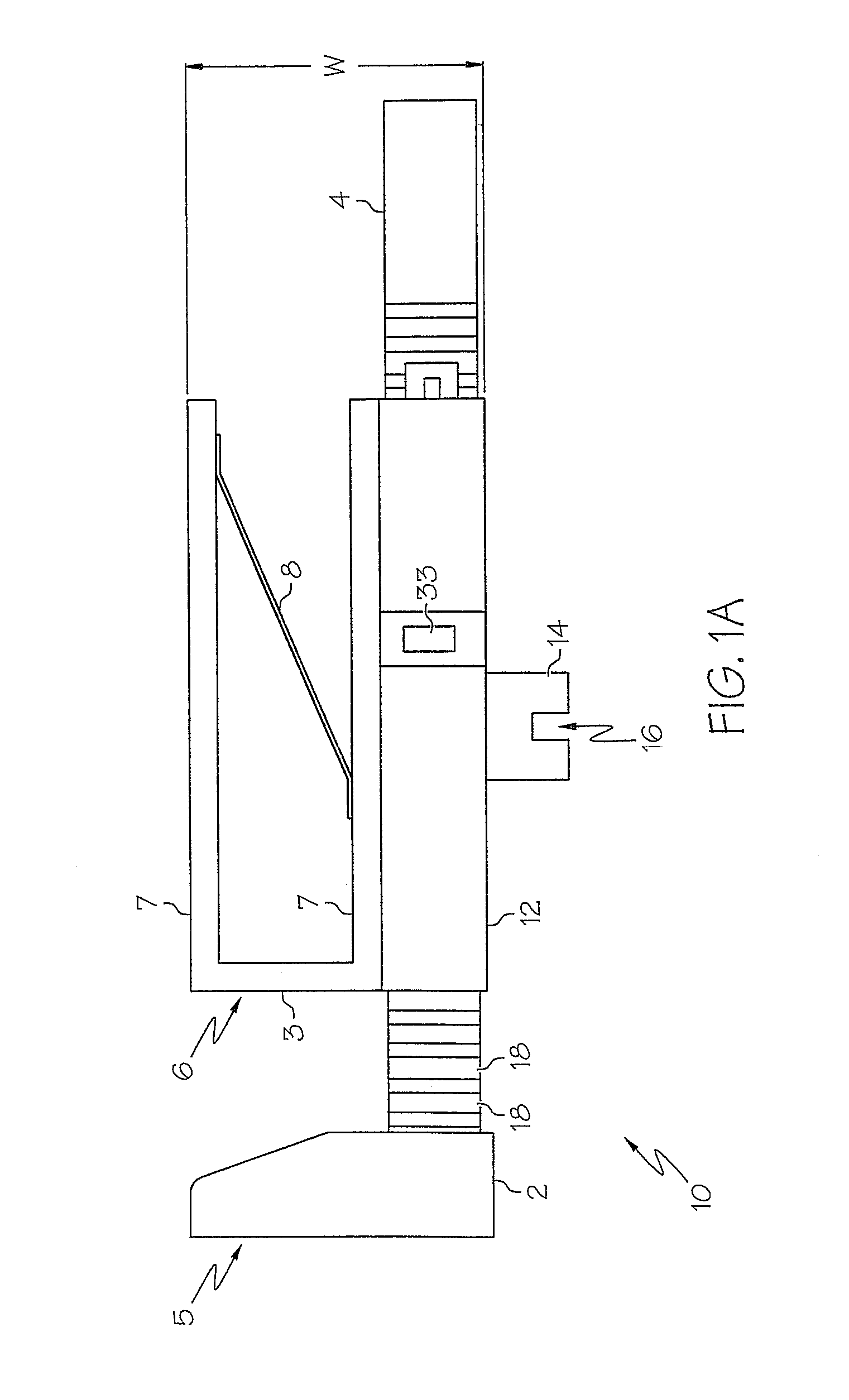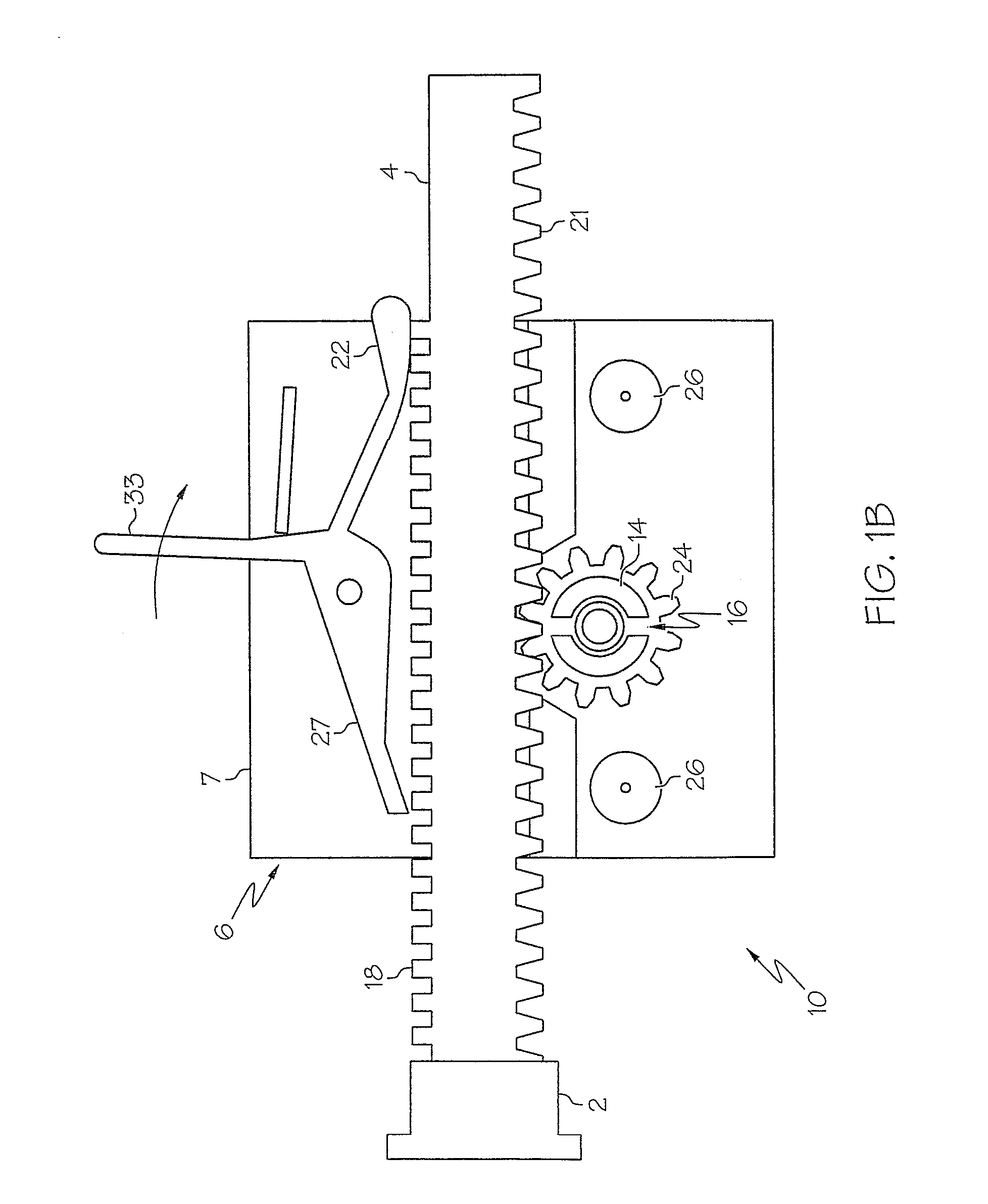Storm barrier assembly
a technology of storm barriers and assemblies, which is applied in the direction of wing arrangements, mechanical devices, shutters/movable grilles, etc., can solve the problems of high wind and airborne debris, catastrophic failure of roof structures, and high cost of shutters and other permanently installed devices, and achieve the effect of low surface friction
- Summary
- Abstract
- Description
- Claims
- Application Information
AI Technical Summary
Benefits of technology
Problems solved by technology
Method used
Image
Examples
Embodiment Construction
[0021]The present invention is described in a preferred embodiment in the following description with reference to the figures. While this invention is described in terms of the best mode for achieving this invention's objectives, it will be appreciated by those skilled in the art that variations may be accomplished in view of these teachings without deviating from the spirit or scope of the present invention. Furthermore, when used and unless otherwise stated, the terms “horizontal,”“vertical,”“upper,”“lower,”“front,”“back,”“over,” and “under,” and similar position related terms are not to be construed as limiting the invention to a particular orientation. Instead, such terms are to be construed only on a relative basis with respect to the accompanying depicted embodiments.
[0022]The present invention is directed to an improved method and apparatus for protectively covering a window or other framed building portal or entryway that is quickly and easily installable and provides adequa...
PUM
 Login to View More
Login to View More Abstract
Description
Claims
Application Information
 Login to View More
Login to View More - R&D
- Intellectual Property
- Life Sciences
- Materials
- Tech Scout
- Unparalleled Data Quality
- Higher Quality Content
- 60% Fewer Hallucinations
Browse by: Latest US Patents, China's latest patents, Technical Efficacy Thesaurus, Application Domain, Technology Topic, Popular Technical Reports.
© 2025 PatSnap. All rights reserved.Legal|Privacy policy|Modern Slavery Act Transparency Statement|Sitemap|About US| Contact US: help@patsnap.com



